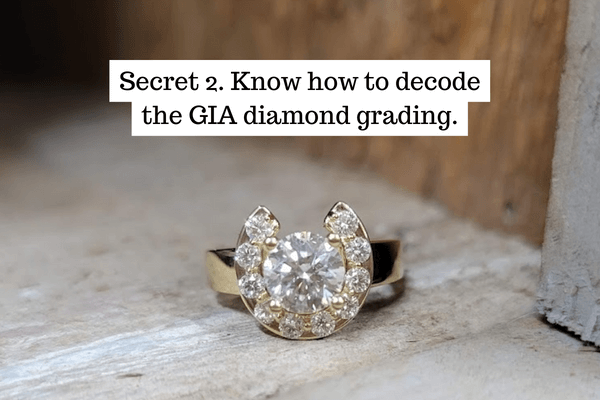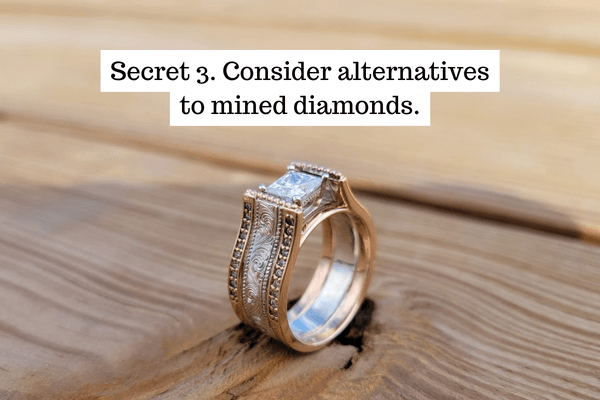You don’t have to stress when choosing a diamond.
Something glamorous: diamonds. They’re iconic, sparkly, and referenced in a billion pop songs. As I type this I’ve got “Shining bright like a diamond, We’re beautiful like diamonds in the sky” going through my head. Thanks, Rihanna.
Something not so glamorous: Diamond shopping. It can be super overwhelming, especially if you’re unfamiliar with all the terms. Like what the heck is a GIA certificate? Does clarity matter? What cut should I choose? There are so many factors to keep in mind while choosing a diamond that dazzles and won’t break the bank.

Carat means weight, not size:
There’s a common misconception that carat refers to the size of the diamond, but it’s actually a weight measurement, equal to 200 milligrams. Diamonds can be measured extremely precisely because each carat is divided into 100 points. Carat can affect price, but there are a few other things to factor in. Two diamonds identical in carat weight could be hundreds of dollars apart based on the other Cs, which we’ll talk about more below.
Pro tip: buying a diamond one point below a full carat can save you a lot of $$$$

Here’s how to decode diamond GIA grading:
Diamonds are graded on 4 Cs: cut, color, clarity, and carat. Here’s a short summary of each:
- Carat: (see above!)
- Color: Very few diamonds are colorless. Most are in the range of yellow to brown. The scale starts with Colorless (D) and ends with yellow (Z).
- Cut: Don’t confuse cut with shape- it’s angle measurements and facet symmetry, which can influence how much light the diamond reflects. Cut grade is divided even further into 3 things: Proportions, Symmetry, and Polish. Each cut parameter is evaluated separately according to different quality grades: Excellent (EX), Very Good (VG), Good (G), or Fair (F).
- Clarity: As diamonds are formed inside the earth, they develop inclusions and blemishes. Clarity is rated starting at internally flawless(IF)/loupe clean (LC), and goes down to Piqué 3 (P3). A common recommendation is to shoot for a diamond between VVS2 and SI2. They might have flaws under a loupe, but they will be “eye clean”.
- Pro tip: If you’re going to splurge on one C over another while choosing a diamond, go for clarity. It has the biggest effect on sparkle.

Consider alternatives to mined diamonds:
Trying to stay budget-friendly? If you’re dead set on diamonds, consider lab diamonds. They’re typically about 30% cheaper than mined diamonds and are visually indistinguishable. Moissanite is another great alternative. It’s almost identical, and a fraction of the price.

Keep in mind what style of ring you’re after:
When choosing your diamond shape, you’ve got a lot of choices, from soft ovals and pears to angular triangles and rectangles. A good way to go about picking a shape when buying a diamond is to keep in mind what you want the final ring to look like overall, and choose what will look best in the setting.

Want to know the best way to find a diamond?
Let us help you! We’re happy to help you with buying a diamond. Just shoot us an email or message us and we’ll work with you to build your perfect custom ring, including finding the perfect stone.
That’s all for now! Have a great day, and shine bright like a diamond!
If you found this article helpful you might want to check out…
Western Engagement Rings & Wedding Bands
 CLICK HERE TO SEE OUR SECRET HOLIDAY SALES
CLICK HERE TO SEE OUR SECRET HOLIDAY SALES 




